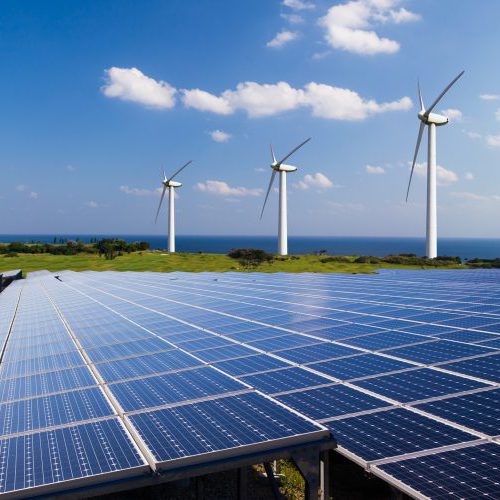Energy
IEA Boosts Renewable Energy Forecast, but Trump Tax Plan Might Hurt Industry

Published:
Last Updated:

Buoyed by a 50% increase in solar capacity around the world, the International Energy Agency has raised its forecasts for renewable energy over the next five years. However, the tax reform plan proposed by the Trump administration might set back momentum for the renewable energy sector.
The IEA’s raised forecast was powered by a spike in solar PV (photovoltaic) capacity in China, India and the United States, with China accounting for almost half of this expansion.
For the first time, solar PV additions increased faster than any other fuel, eclipsing the net growth in coal.
In its report, the IEA expects global renewable electricity capacity to rise by more than 920 gigawatts (GW), or 43%, by 2022, because of supportive policies for low-carbon energy and cost reductions for solar PV and wind. The projected growth is 12% higher than the IEA’s forecast last year.
“Solar PV is entering a new era,” said an ebullient IEA in its report. “For the next five years, solar PV represents the largest annual capacity additions for renewables, well above wind and hydro. This marks a turning point and underpins our more optimistic solar PV forecast.”
Even so, there is concern in the renewable community about the impact the president’s proposed tax reform will have on the future of the industry. Wind and solar companies depend on financing from financial institutions that take advantage of federal credits through tax-equity financing. This lets businesses buy tax credits from renewable-energy developers they can use to lower their own tax bills. If corporate rates fall — the U.S. has the highest corporate tax rates in the world — investors will have less need for write-offs, and that could undermine a key source of financing for clean energy.
In a Bloomberg News report, renewable energy in 2016 received $10.9 billion in tax preferences, compared with $4.6 billion for fossil fuels. A decade ago, fossil fuels got $8.2 billion while renewables received $5.3 billion in tax preferences, according to the Congressional Budget Office.
The IEA forecast follows a strong year for renewable energy capacity in which the sector — including hydropower, solar, wind, bioenergy, wave and tidal — grew by 165 GW, 6% more than in 2015, the report said.
China represents half of global solar PV demand, while Chinese companies account for around 60% of total annual solar cell manufacturing capacity globally.
The United States is the second-largest growth market for renewables. The IEA said the main drivers remain strong for new onshore wind and solar capacities, such as federal tax incentives combined with renewable portfolio standards as well as state-level policies for distributed solar PV.
The IEA addressed the proposed tax plan, saying “the current uncertainty over proposed federal tax reforms, international trade, and energy policies could have implications for the relative economics of renewables and alter their expansion over the forecast period.”
By 2022, India, the world’s second-most populous country, is expected to more than double its renewable electricity capacity, according to the IEA. For the first time, this growth over the forecast period is higher compared with the European Union. Solar PV and wind together represent 90% of that nation’s capacity growth.
Renewable growth in the European Union over the forecast period is 40% lower compared with the previous five-year period. The IEA cited weaker electricity demand and overcapacity among the reasons for its forecast.
IEA is more bullish for developing Asia and sub-Saharan Africa. The agency predicts off-grid capacity in these regions will almost triple by 2022.
The IEA predicts that in the next five years, growth in renewable generation will be twice as large as that of gas and coal combined. Though coal will still be the largest source of electricity generation in 2022, renewables cut that gap in half.
Despite slower capacity growth, hydropower will remain the largest source of renewable electricity generation in the IEA forecast, followed by wind, solar PV and bioenergy.
If you’re one of the over 4 Million Americans set to retire this year, you may want to pay attention.
Finding a financial advisor who puts your interest first can be the difference between a rich retirement and barely getting by, and today it’s easier than ever. SmartAsset’s free tool matches you with up to three fiduciary financial advisors that serve your area in minutes. Each advisor has been carefully vetted, and must act in your best interests. Start your search now.
Don’t waste another minute; get started right here and help your retirement dreams become a retirement reality.
Thank you for reading! Have some feedback for us?
Contact the 24/7 Wall St. editorial team.